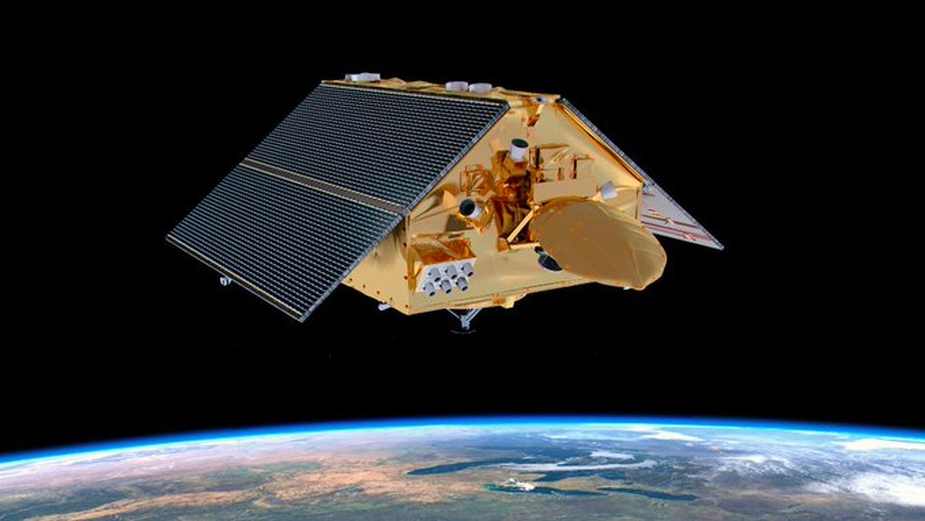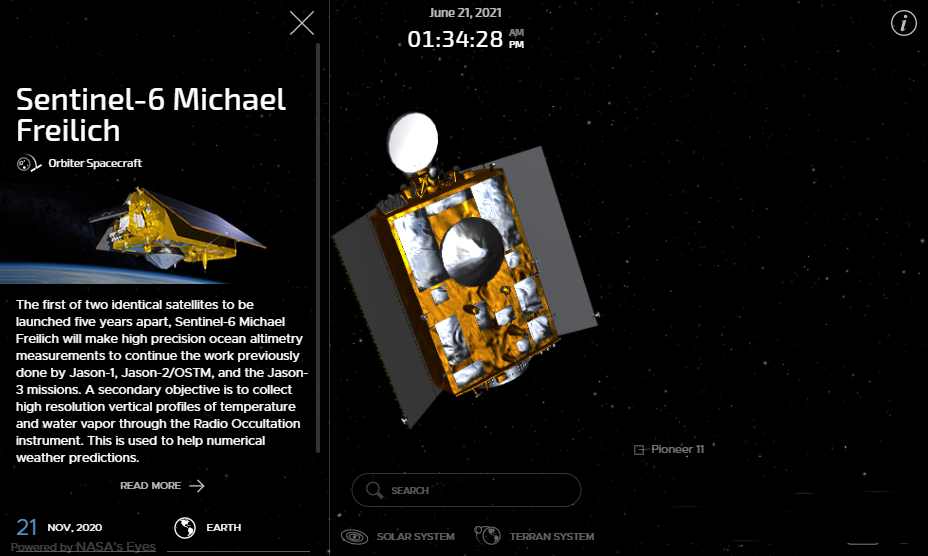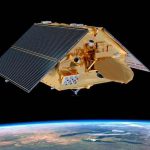Sentinel-6 Michael Freilich, the tiny-house-looking ocean monitoring satellite launched by NASA six months ago, will make its first data streams available to the public on June 22

On November 20, 2020, we wrote about Sentinel-6 Michael Freilich after the National Aeronautics and Space Administration (NASA) launched the tiny-house-looking satellite to monitor and track the rise in global sea level.
Now six months after the flawless launch, NASA announced this afternoon that the U.S.-European Sentinel-6 Michael Freilich ocean-monitoring satellite “will make its first two data streams available to the public on June 22.”
The satellite was launched from Vandenberg Air Force Base in California on Nov. 21, 2020, and is a U.S.-European collaboration to measure sea surface height and other key ocean features, such as ocean surface wind speed and wave height. The satellite was carried into space on a SpaceX Falcon 9 rocket.

According to NASA, the ocean absorbs more than 90% of the heat trapped in the Earth system by increasing concentrations of greenhouse gases, which causes seawater to expand and sea level to rise. Monitoring ocean height is important because it helps forecasters predict things, including ocean currents and potential hurricane strength.
“These initial data show that Sentinel-6 Michael Freilich is an amazing new tool that will help to improve marine and weather forecasts,” said Eric Leuliette, program and project scientist at the
NASA said that one of the sea surface height data streams that will be released is accurate to 2.3 inches (5.8 centimeters) and will be available within hours of when the instruments aboard Sentinel-6 Michael Freilich collect it.
The second stream of data, accurate to 1.4 inches (3.5 centimeters), will be released two days after collection. The difference in when the products become available balances accuracy with delivery timeliness for tasks like forecasting the weather and helping to monitor the formation of hurricanes. More datasets, which will be accurate to about 1.2 inches (2.9 centimeters), are slated for distribution later this year and are intended for research activities and climate science including tracking global mean sea level rise.
The satellite, named after former NASA Earth Science Division Director Michael Freilich, collects its measurements for about 90% of the world’s oceans. It is one of two satellites that compose the Copernicus Sentinel-6/Jason-CS (Continuity of Service) mission. The second satellite, Sentinel-6B, is slated for launch in 2025. Together, they are the latest in a series of spacecraft starting with TOPEX/Poseidon in 1992 and continuing with the Jason series of satellites that have been gathering precise ocean height measurements for nearly 30 years.
Shortly after launch, Sentinel-6 Michael Freilich moved into position, trailing the current reference sea level satellite Jason-3 by 30 seconds. Scientists and engineers then spent time cross-calibrating the data collected by both satellites to ensure the continuity of measurements between the two. Once they have are assured of the data quality, Sentinel-6 Michael Freilich will then become the primary sea level satellite.
“It’s a relief knowing that the satellite is working and that the data look good,” said Josh Willis, project scientist at NASA’s Jet Propulsion Laboratory in Southern California. “Several months from now, Sentinel-6 Michael Freilich will take over for its predecessor, Jason-3, and this data release is the first step in that process.”
NASA said the Sentinel-6 Michael Freilich satellite will be followed in 2025 by its twin, Sentinel-6B. Together, the pair is tasked with extending our nearly 30-year-long record of global sea surface height measurements. Instruments aboard the satellites will also provide atmospheric data that will improve weather forecasts, climate models, and hurricane tracking.

